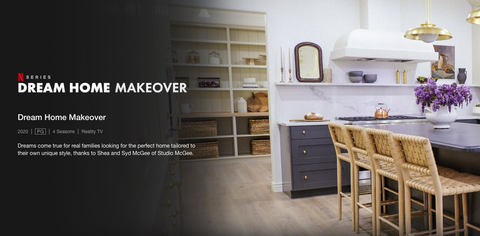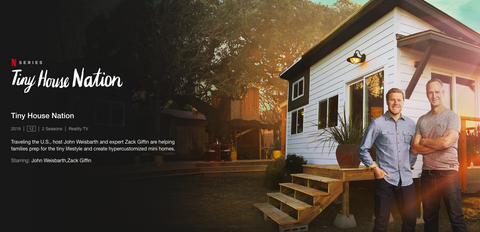![]()
Couch-Based Design School: Can TV Really Teach You Interior Design?
Can your television transform you into the next big interior designer? In a world where inspiration is just a remote-click away, TV shows dedicated to home makeovers and interior design are more popular than ever. These shows not only offer entertainment but also purport to teach us about design principles, trends, and techniques. But is it really possible to master the art of interior design just by watching TV? Let’s explore the advantages and limitations, and dive into the top 10 interior design shows that could be your informal education in designing beautiful spaces.
Pros and Cons of Learning Interior Design from TV Shows
Television has the unique ability to bring distant ideas right into our living rooms, and when it comes to interior design, the exposure is both educational and highly inspirational. These shows demystify the elements of design that might otherwise seem out of reach, presenting them in a way that feels attainable and exciting. Let’s delve into some specific advantages that make learning interior design from TV shows an appealing option for many.
-
Accessibility and Inspiration:
- Interior design shows are the democratizers of design knowledge. By broadcasting a variety of design approaches, these programs make learning about interior design accessible to a broad audience, regardless of their background or budget. Viewers are treated to a visual feast of transformative projects, which can spark the imagination and inspire them to think creatively about their own spaces.
-
Exposure to Different Styles:
- One of the greatest benefits of watching these shows is the exposure to a multitude of design styles. Whether it’s the clean lines of modern aesthetics or the eclectic touches of bohemian interiors, viewers can explore a vast landscape of design. This broad exposure helps individuals refine their own design preferences and encourages a deeper appreciation of the diversity and possibilities within the field of interior design.
-
Practical Tips and Tricks:
- Beyond the sweeping transformations and dramatic reveals, these shows are treasure troves of practical advice. From space-saving solutions to DIY hacks, they offer viewers actionable tips that can be directly applied to their own home improvement projects. These segments provide simple yet effective ideas that can significantly enhance the functionality and aesthetic appeal of any space, often with minimal cost and effort.
However, as with any educational resource, learning exclusively from TV has its limitations. While the visual and dramatic aspects of these shows are undeniably compelling, they often fail to convey the full complexity of the design process. Below, we explore some of the critical drawbacks that prospective designers should consider.
-
Lack of Depth:
- Interior design is an intricate field that blends creativity with technical skills, and unfortunately, the depth of this complexity is rarely captured fully in a 30-minute or one-hour segment. TV shows often focus on aesthetic aspects and overlook the technical details like structural integrity, building codes, and long-term durability. This superficial coverage might leave viewers with a skewed understanding of what interior design truly entails.
-
Reality vs. Reality TV:
- The projects on these shows often come with timelines and budgets that are far from typical. Renovations that appear to unfold over a weekend might actually be the result of weeks of behind-the-scenes work. This can set unrealistic expectations for viewers, who might assume similar projects can be completed in their homes within similar timeframes and financial constraints.
-
Oversimplification:
- TV has a tendency to simplify complex decisions, especially those involving space planning, materials selection, and lighting. By focusing on the visual before-and-after, important steps in the design process are often glossed over or completely omitted. This can lead to misunderstandings about the challenges and nuances of real-life interior design work, where such decisions have significant functional and aesthetic impacts.
Understanding these pros and cons will help viewers more critically assess the content of these design shows and better apply the insights they gain to their own design projects.
Top 10 Interior Design Shows for Aspiring Designers
1. Dream Home Makeover (Netflix)
-
Synopsis: Follow Shea and Syd McGee as they transform outdated properties into visually stunning dwellings.
-
Learning Points: Gain insights into project management and the integration of design aesthetics with client desires.
2. Get Organized with The Home Edit (Netflix)
-
Synopsis: Clea Shearer and Joanna Teplin tackle clutter with their unique brand of visually appealing organizational strategies.
-
Learning Points: Learn how organization contributes to overall room design and functionality.
3. Queer Eye (Netflix)
-
Synopsis: The Fab Five rejuvenate lives, including homes, blending emotional transformations with interior makeovers.
-
Learning Points: Understand the emotional impact of spaces and holistic design approaches.
4. Instant Dream Home (Netflix)
-
Synopsis: A team renovates homes in a breathtakingly short 12 hours, showcasing rapid decision-making and execution.
-
Learning Points: Learn about fast-paced renovations and the importance of teamwork in large-scale projects.
5. Interior Design Masters (BBC iPlayer)
-
Synopsis: Aspiring designers compete by tackling complex design challenges in a variety of settings.
-
Learning Points: Exposure to competition-based problem-solving and diverse design styles.
6. Escape to the Chateau (Channel 4)
-
Synopsis: Follow a couple’s ambitious project of renovating a historic chateau in France.
-
Learning Points: Discover the challenges of restoring historical properties and integrating modern amenities without compromising historical integrity.
7. Tiny House Nation (Netflix)
8. Love It or List It (HGTV)
-
Synopsis: Homeowners choose between renovating their current home or moving to a new one after seeing both options.
-
Learning Points: Understand the real estate aspect of design and renovation impacts on property value.
9. Good Bones (HGTV)
-
Synopsis: A mother-daughter team renovates rundown homes in Indianapolis, focusing on structural overhauls and design.
-
Learning Points: Gain insights into structural challenges and the balance between design and functionality.
10. Motel Makeover (Netflix)
-
Synopsis: Transforming dilapidated motels into chic boutique hotels, this show highlights the potential of commercial spaces.
-
Learning Points: Learn about commercial design and branding through interiors.
While television shows can be a fantastic source of inspiration and education for aspiring designers, they should be complemented with hands-on experience and formal education to fully grasp the complexity of interior design. Good luck in your new career!




